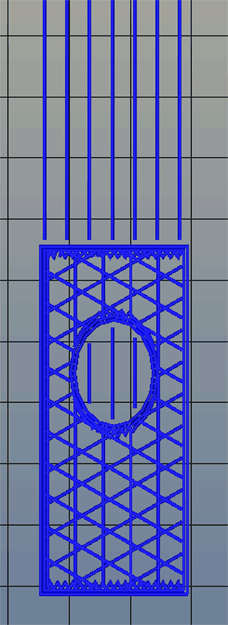 Last month, while my colleagues from the 3DPrint.com team were soaking up the sun at RAPID 2016, back at home we reported on the new methodologies for generating internal structures that were unveiled by Type A Machines. Their Cura Type A software, which is currently available for download as a public beta release, has been enhanced with new features that provides increased access and efficiency for generating internal geometries and infills within your 3D prints. Type A Machines refers to the inner-workings of a 3D object as ‘internal structure’ rather than infill, and the change in name lends credence to the fact that these features are a true breakthrough in 3D printing software.
Last month, while my colleagues from the 3DPrint.com team were soaking up the sun at RAPID 2016, back at home we reported on the new methodologies for generating internal structures that were unveiled by Type A Machines. Their Cura Type A software, which is currently available for download as a public beta release, has been enhanced with new features that provides increased access and efficiency for generating internal geometries and infills within your 3D prints. Type A Machines refers to the inner-workings of a 3D object as ‘internal structure’ rather than infill, and the change in name lends credence to the fact that these features are a true breakthrough in 3D printing software.

Cura Type A’s infill generator (Image Source: Hackaday)
The two new features of their software that deal with enhancing internal structures are called Absolute Dimensions and 3D Internal Structures, and thus far, they’ve proved to help create higher quality 3D printed parts. Cura Type A internal structure process allows the 3D designer to set the precise distance between rows and columns of the object’s infill, essentially defining the infill in absolute dimensions. This process creates a ‘true’ 3D structure, and enables the 3D printed object to become more resistant to stress, while simultaneously using less material on the infill. Not only does the software enable more accurate dimensions, it also utilizes a unique twist on the cubic shape within the structure.
Instead of defaulting to a grid of stacked squares, triangles, or hexagons that are typically layered within the structure of your model, the Cura Type A software will generate an infill of cubes turned over on their sides, lining the infill along the perimeter of the 3D printed object. Once this modified cubic pattern is instilled into the 3D object, it may appear as a series of awkwardly set triangles or hexagons, but in reality, this unique infill forms a true 3D structure.
To me, this enhanced internal structure was best described in a recently published Hackaday article, which compared traditional infill generation and Cura Type A’s enhanced version as if they were graphite and diamonds, respectively. Although they’re both composed of the carbon element, graphite has thin layers of graphene that make it a weak material, while a diamond is internally a true 3D structure and one of the hardest materials on our planet.
Cura Type A isn’t the only software making an attempt to enhance the internal structure of 3D printed objects; for instance, Slic3r has a 3D Honeycomb infill feature developed last year. This Slic3r feature generates an infill pattern that varies across the Z axis rather than repeating the same shape throughout all the layers, which enhances the properties of the internal structure similarly to the Cura Type A features. All in all, these improvements in 3D software are just as important (if not more so) than advancements in 3D printing hardware. In order to truly optimize the 3D printing process, we must first ensure that the insides of our 3D models are as structurally sound as possible. Discuss further over in the Cura Type A Enhancing 3D Printers forum at 3DPB.com.
[Source: Hackaday]
Subscribe to Our Email Newsletter
Stay up-to-date on all the latest news from the 3D printing industry and receive information and offers from third party vendors.
Print Services
Upload your 3D Models and get them printed quickly and efficiently.
You May Also Like
SEOULTECH Researchers Make Auxetic 3D Printed Pressure Sensors for Wearables
In a recent paper, Seoul National University of Science and Technology (SEOULTECH) researchers look at “Additively Manufactured 3D Auxetic Metamaterials for Structurally Guided Capacitive and Resistive Tactile Sensing.” Mingyu Kang, Hong-Gap...
3D Printing News Briefs, September 17, 2025: IDEX Printer, NiTi Scaffolds, Cooking Oil, & More
In today’s 3D Printing News Briefs, Raise3D announced the launch of a new printer at FABTECH 2025, and EOS and AM Solutions share about their integrated post-processing ecosystem, first introduced...
ICAM 2025: A Decade of Driving Additive and Advanced Manufacturing
When ASTM International first convened a technical workshop on additive manufacturing (AM) in 2016, the industry was still laying its foundation. The conversations centered on fatigue and fracture behaviors, and...
ETH Zurich Develops Rotary LPBF System that Processes Multiple Metals
ETH Zurich researchers have come up with a rotary LPBF system, the RAPTURE, that can process multiple metal materials simultaneously. In their published paper, they explain that the system may...
































